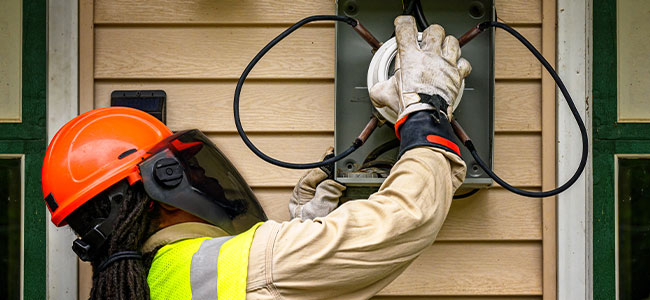
Balancing Cost with Comfort
Selecting the best PPE for improved arc flash safety for electrical workers starts with asking the right questions.
- By Scott Francis
- May 01, 2024
A father in Texas with years of electrical experience helping demolish an elementary school.1 A 30-year old man making repairs to an Arizona Goodwill store.2 An MBTA employee in Boston working on repairs to the railroad.3 All of these electrical workers know first-hand the impact and damage an arc flash can have on a life — they’ve experienced one while on the job.
According to the National Institute for Occupational Health & Safety, an estimated five to 10 arc flash incidents with electrical equipment occur every day. With this much risk at play, selecting the right personal protective equipment (PPE) for electrical workers isn’t a “check the box” type of job responsibility. Someone’s life is in your hands. But today, with calls for more comfortable workwear, striking the balance between cost-effectiveness and comfort is becoming more difficult.
While it can be tempting to prioritize the bottom line when making PPE selection decisions, especially in higher cost garments like flame-resistant and arc flash apparel, compromising quality or comfort can be a detrimental decision. A poorly fitting or uncomfortable garment may discourage workers from wearing it consistently, increasing the risk of injury in the event of an arc flash.
The 2024 NFPA 70E, Standard for Electrical Safety in the Workplace, is one of the most trusted sources of safety in the electrical industry. The latest edition of NFPA 70E emphasizes assessing the condition of equipment maintenance. That update begs the question — what is the current condition of your organization’s FR/AR PPE program? Is it time to take a second look at the gear your workers are relying on to keep them safe while on the job?
Annual Program Audits
Adding an annual FR/AR PPE program audit is one of the simplest ways to ensure apparel is being properly maintained and the longevity of the garments isn’t in question. Plus, a yearly review allows health and safety professionals an opportunity to anonymously poll the garment wearers to gain more qualitative data. These insights can help you navigate the current program’s effectiveness and identify areas of opportunity for future programs.
A few questions to consider asking in these audits include:
• “Do any of your provided or approved FR/AR PPE garments keep you from doing your job?”
• “Have you ever opted for a non-FR/AR garment on-the-job because your PPE wasn’t comfortable?”
This article originally appeared in the April/May 2024 issue of Occupational Health & Safety.